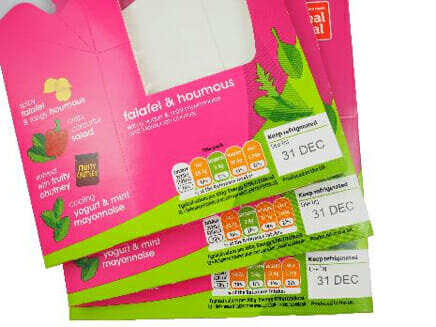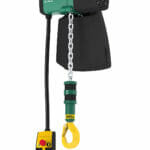On stand A37, Rotech will demonstrate the latest inks used in TIJ (thermal inket) coding technologies to help food factories achieve their circular economy packaging goals. Visitors to the stand will see new ways to code sleeves, films and cartons which are inherently cleaner, less damaging to the environment, energy efficient and more reconcilable with natural, clean label product concepts. Rotech’s new TIJ coding solutions also score additional sustainability points as the technology can code recycled fibrous cards with less ink bleeding, as well as biodegradable films including cornstarch and sugar cane polymers.
The trend towards TIJ is marked among artisan food producers with smaller factories, where the packaging and production areas are in close proximity to one another. A cartridge-based coding technology is preferable as it won’t give off any odours, whereas with CIJ (continuous ink jet), print-related odours are a problem due to the VOCs (volatile organic compounds) emitted during the coding process. This introduces a very real risk of odour ingress into the product, particularly when packaging is carried out in a confined space or the coder is situated close to the unpackaged product. Some products, notably chocolates, fresh desserts and baked goods, are very susceptible to odour absorption to the extent that exposure will impact on taste.

Rotech will help visitors benchmark different aspects of the sustainability packaging agenda and connect the different circular economy dots. “When exploring sustainable packaging practices, the coding operation is subject to the same scrutiny as any other process,” highlights Richard Pether, director at Rotech. For example, comparing TIJ to continuous inkjet (CIJ) and thermal transfer (TT), which one uses less ink per code? Which method releases more toxic solvents into the atmosphere? Which printer uses more consumables, for instance ribbons? What’s the Total Cost of Ownership (TCO)? Which is better for the climate?

With consumers looking to food companies to take the lead on environmental issues, it’s predicted that the global green packaging market will surpass $238 billion by 2025[i]. The paper and paperboard segment is expected to retain market dominance throughout this forecast period. Rotech has recently worked with organic, all-natural and free-from ice-treat brand LICKALIX which is the first EU ‘frozen treat’ business to introduce plastic free packaging that can be composted in a food waste bin and will decompose within 12 weeks.TIJ – the leaner, greener and cleaner print solution
Following extensive tests printing codes onto recycled board Rotech can testify that TIJ print cartridges, which use finer gauge nozzles, can achieve a larger number of smaller dots per inch. “The surface of recycled board tends to be more fibrous and undulating than conventional board, causing the ink to spread. CIJ printers expel much more ink per drop than TIJ printers, increasing the probability of codes being illegible. This can lead to more packaging waste as well as retail rejects if ink rubs off or smears in transit to the stores” comments Richard.
[i] Coherent Market Insights https://www.coherentmarketinsights.com/market-insight/green-packaging-market-820







